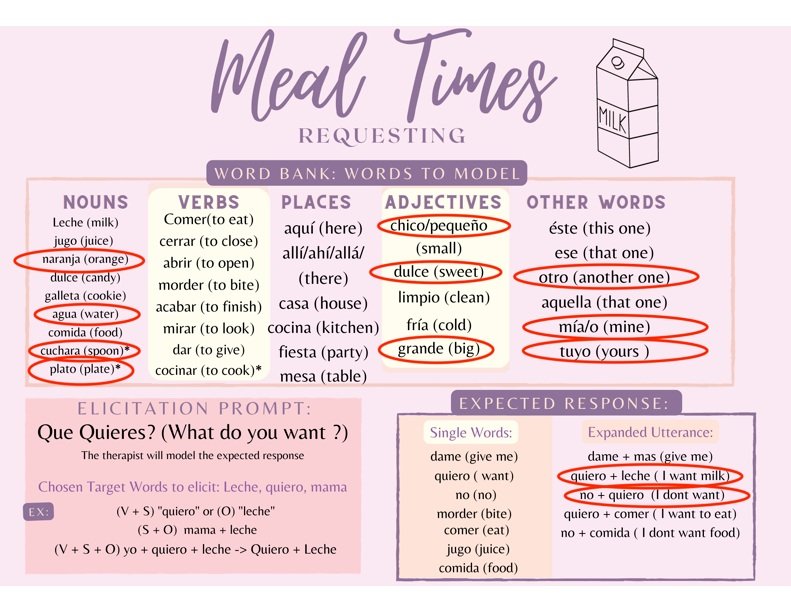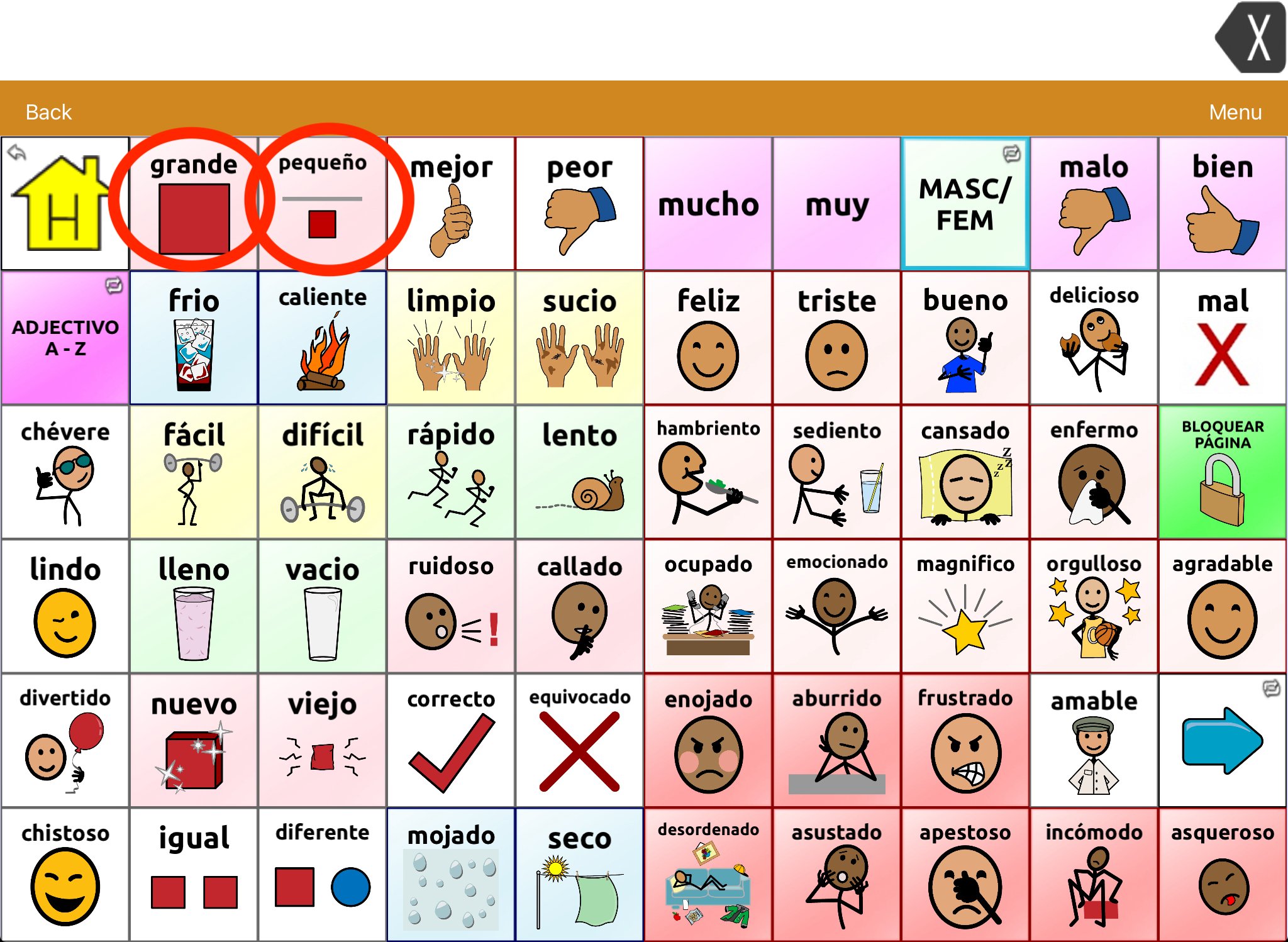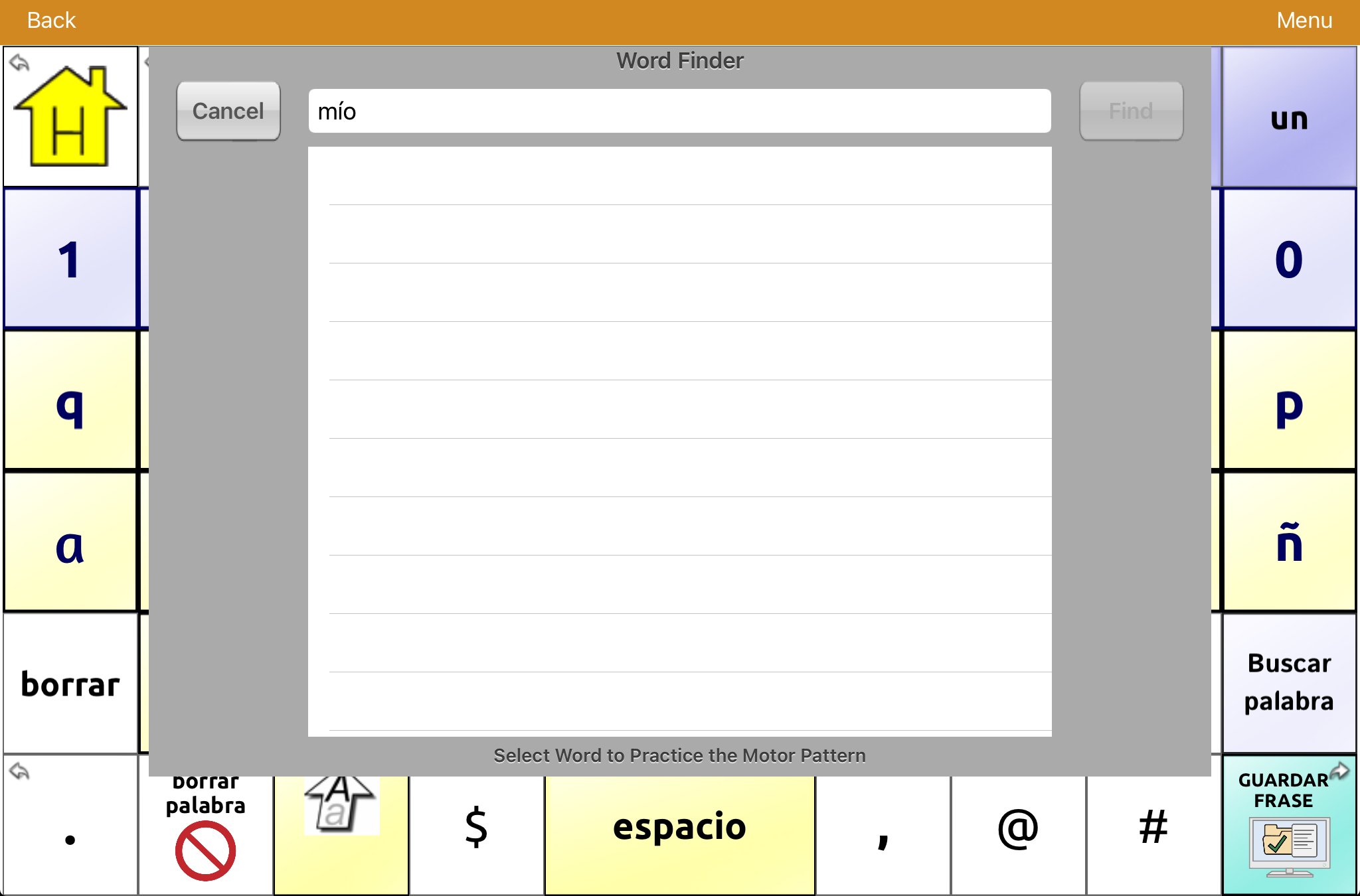How to use the templates
Hey there! Thank you for following us throughout our journey into AAC Spanish bilingualism. Many of you have wondered and asked,
How do you use the templates?
We hear ya!
Here’s a quick tutorial on how I, a monolingual SLP/AAC specialist, uses it! Free templates are available here.
Step 1: Identify the vocabulary
I chose the following phrase as my “expected response” to model :
quiero leche/agua/naranja/cuchara/plato
or
No quiero
I will model, passively without expecting a response from my client(s), the following words:
chico/pequeño, dulce, grande, mío, tuyo
STEP 2: Find the vocabulary in the device.
Make sure you have a Spanish language overlay on your device. If you have the TouchChat app, you can use the Spanish toggle feature and voice. If you don’t know how to do that, check out this great video from diverseAAC.
I see that the system is using the word “pequeño” over “chico.” I may ask the parent which one they prefer and make the necessary changes.
We have a cultural survey and family questionnaire to help guide and customize any device vocabulary here.
It might be faster to look for words through the “Buscar palabar” or “WordFinder” under the keyboard function of TouchChat.
In some cases, the word is not available. This is when you may want to consider customizing a button.
Looks like it was here after all. Sometimes WordFinder is wrong.
Step 3: Start practicing your models!
As per the “elicitation prompt” I will say:
“Que quieres?”
and I will model,
“Quiero agua”
Demonstrating the locations of the symbols and categories. I will also show the student, the real object. In this case— the water bottle to pair the symbol on the device (“Agua”). I may even pretend to drink it.
Eventually I will ASK AGAIN, “Que quieres?” and WAIT for a possible response.
If the client says “yo” and appears stumped on the next navigational step, I will MODEL, the remainder of the sentence…”quiero agua.”
Other things I may do….
I may do “Self talk.” This strategy is available as a handout here.
I will say AND model on the device:
“Quiero naranja”
Take a bite of the naranja and say AND model on the device:
“Dulce”
“Otro”
Pick up a large slice of orange and say:
“Grande”
At this point, I am not EXPECTING a response for them. Just passively modeling and giving them plenty of wait time to say whatever they’d like. To learn more about Aided Language Stimulation/Modeling, handout available here.
The Bottom Line
The only time I may give them an expectant pause, gesture to the device, or look at the device, is after I ask the question/”elicitation prompt”:
“Que quieres”
The “practice” of the expectant response would be:
“Yo quiero _____”.
I know how you’re feeling. It’s a PROCESS ! But YOU GOT THIS!
Keep practicing with your clients and the more you do it, the better and faster you’ll get!






